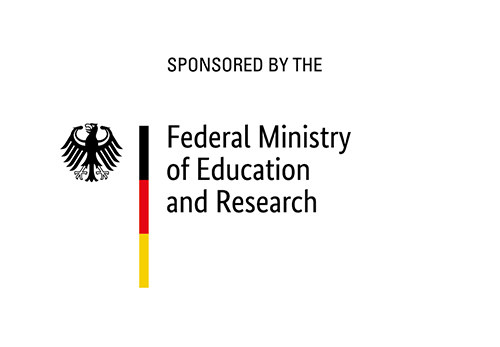Employing water management to save resources
Clean water is far too valuable to be poured down the drain. At the IFAT trade fair in Munich – April 25 to 29 – Fraunhofer researchers will be presenting practical solutions that can dramatically reduce the consumption of drinking water. The small amount of wastewater that is nevertheless produced can be reclaimed for household use or converted into energy and fertilizer in a decentralized treatment plant.

“Before we can sell our ideas abroad, we first have to show what we can do in our own country“, declares Professor Walter Trösch, deputy director of the Fraunhofer Institute for Interfacial Engineering and Biotechnology IGB. At IFAT, his institute will be exhibiting a rotating disk filter which lies at the heart of a new water treatment technology in which membranes are used as highly efficient filters to remove sludge and pathogens from wastewater. A pilot version of the membrane sewage treatment plant is to start operation in Neurott near Heidelberg this summer. Through this project, the researchers plan to demonstrate the technical feasibility and economic benefits of decentralized wastewater treatment. “Neurott is a typical small rural community, cut off from the main public sewer network due to the prohibitive cost of laying pipes over long distances,“ Trösch explains.
Neurott is by no means an exception: There are people living in small communities all over the world without access to proper sewerage facilities. In the rural areas of richer, developed countries, domestic wastewater is collected in draining wells. In the poorer regions of the world, wastewater is allowed to flow untreated into the nearest stream or river. But as Trösch points out: “Membrane water treatment technology can solve many wastewater problems, not only in isolated communities.“
In Neurott, the pipes are now being laid that will be used to pump the wastewater away from the houses. The semi-decentralized membrane water treatment plant, capable of processing 10,000 liters of water per day, will be installed in an old shed where firemen used to store their equipment. “The treated water meets the quality standards of bathing-water, and can be released into the nearby stream without any fear of harming the environment,“ Trösch states. “The new disposal method is no more expensive than processing the water in a conventional, municipal sewage plant. And the quality of the treated water output by a semi-decentralized plant is actually higher, because the membranes filter out all bacteria.“ Trösch's team developed the concept for the decentralized treatment plant as part of the DEUS 21 project - short for Decentralized Urban Infrastructure System - which is sponsored by the Federal Ministry of Education and Research BMBF. Apart from the IGB research team, the project is also being worked on by scientists at the Fraunhofer Institute for Systems and Innovation Research ISI and RWTH Aachen.
Wastewater treatment is only one aspect of water management - albeit a vital one. The first stage in the cycle is the supply and distribution of clean drinking water. The next important aspect is avoiding indiscriminate use of this essential natural resource, and finally finding ways of reusing or recycling effluent waste products. Researchers working on the DEUS 21 project have optimized the materials flow for a demonstration village under construction as part of a new residential district in Knittlingen near Pforzheim: All of the houses will have two different sources of water supply - one for drinking water and one for domestic water for other purposes. The latter will be produced on-site from rainwater, passing it through a membrane to filter out microorganisms. The filtered water meets all the necessary sanitation standards. And since rainwater is virtually free of calcium and mineral salts, it is eminently suitable for washing clothes and dishes, for showering or flushing the toilet, and for watering flowers. Using rainwater for all of these purposes dramatically reduces household consumption of drinking water. But that isn't all. The residents of Knittlingen will also benefit from a new wastewater disposal concept, where a vacuum system continuously extracts wastewater from the houses and transports it together with compostable household waste to the decentralized treatment plant on the outskirts of the estate. There, the waste material will be used to generate biogas, which in turn is used to produce energy. Phosphor and nitrogen are separated off, for they can be processed into fertilizer.
“The two projects, in Knittlingen and Neurott, prove that a decentralized infrastructure can work,“ Trösch concludes. “We now intend to offer our technology on the world market - either as a turnkey solution or in the form of individual components that users can adapt to their own requirements.“ Walter Trösch will be holding a lecture on the DEUS 21 project as part of the BMBF forum at IFAT, at 10:40 a.m. on April 27.
Numerous projects that enable us to make more sparing use of limited resources and raw materials will be on show at the joint Fraunhofer-Gesellschaft stand. The Fraunhofer Technology Development Group TEG, for instance, is exhibiting its Plaslight radiation source that can be used to sterilize water. The Fraunhofer Institute for Process Engineering and Packaging IVV is presenting new ideas on the recycling of plastics and electronic waste, and on the recovery of valuable consumables from manufacturing processes. Another interesting exhibit, from the Fraunhofer Institute for Material Flow and Logistics IML, is the Vario-Collector, a new three-bin collection vehicle for waste glass, in which the sorting bins can be adjusted in size to accommodate varying quantities of different-colored glass, thus utilizing the vehicle's capacity to the maximum - up to 18 percent more material can be collected on each trip, reducing overall fuel consumption.
 Fraunhofer Institute for Interfacial Engineering and Biotechnology IGB
Fraunhofer Institute for Interfacial Engineering and Biotechnology IGB